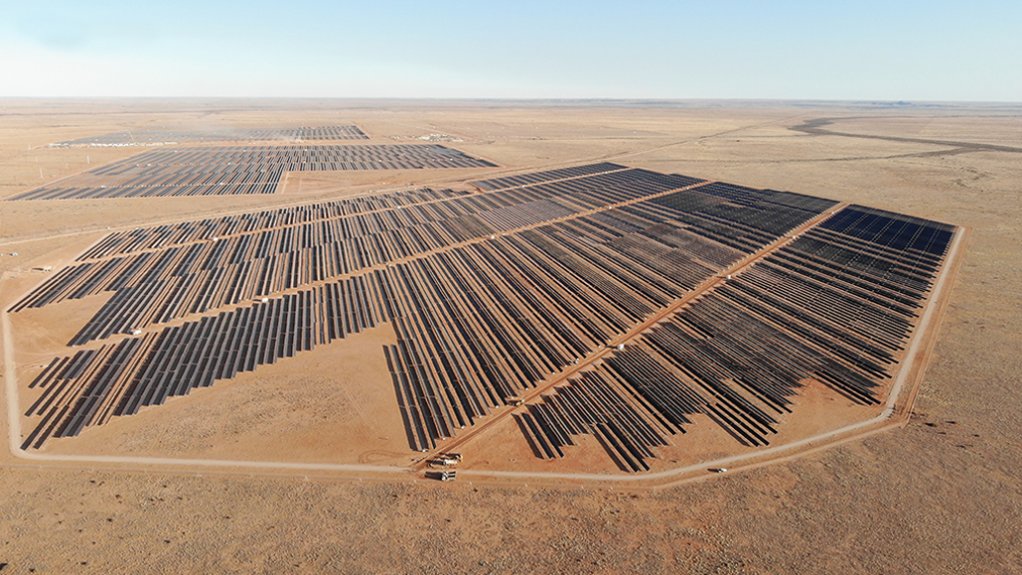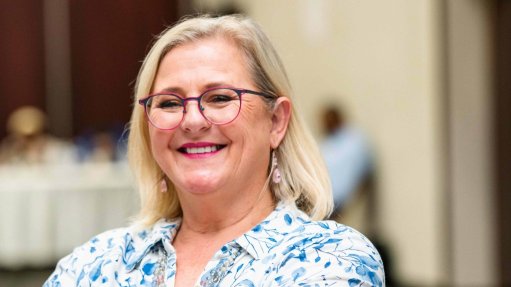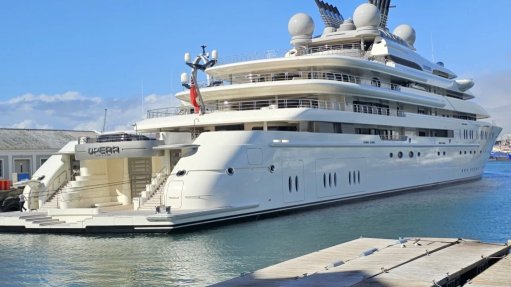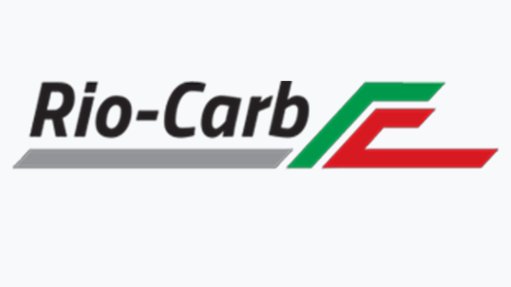Kenhardt hybrid plant to prove competitiveness of dispatchable renewables – Scatec CEO




Scatec CEO Terje Pilskog
The R16.4-billion Kenhardt hybrid project spans a ten-by-three-kilometre site in the Northern Cape
Scatec sub-Saharan Africa executive VP Jan Fourie
The global head of renewable-energy group Scatec is “extremely enthusiastic” about the market opportunities in South Africa, where he says variable wind and solar generation offer the cheapest and quickest route to injecting electricity into the loadshedding-prone grid.
It is also where the company is building an enormous hybrid project that is poised to demonstrate the competitiveness of solar and batteries relative to conventional dispatchable technologies that take far longer to deploy.
Scatec CEO Terje Pilskog, who was in South Africa this week for the Norwegian-listed firm’s board meeting, reports that the R16.4-billion Kenhardt hybrid project, which spans a ten-by-three-kilometre site in the Northern Cape, is on track to begin producing later this year.
The largest renewable hybrid facility on the continent, the facility is combining 540 MW of solar photovoltaic (PV) capacity, comprising nearly one-million panels, with 225 MW/1 140 MWh of battery energy storage, to produce 150 MW of dispatchable electricity daily from 5:00 until 21:30.
Despite being the last project to be selected as a preferred bidder under the much-delayed 2020 Risk Mitigation Independent Power Producer Procurement Programme (RMIPPPP), Kenhardt is the only project named under the 20-year scheme to have achieved financial close to date and has been under construction since July 2022.
Two additional RMIPPPP hybrid projects recently signed project agreements with the aim of achieving financial close before the end of the year, while Karpowership, which secured the lion’s share of the scheme’s 2 000 MW allocation, continues to express optimism that it too will proceed with its three projects. This, despite government having indicated that it does not want the floating gas-to-power vessels to operate for longer than five years.
Pilskog says South Africa was selected to host Scatec’s latest board meeting partly to expose its directors to the innovative Kenhardt project and partly to offer them greater insight into the South African business, which entered the market in 2010 and currently employs some 300 people.
During that period, South Africa has assumed the position of the group’s engineering hub from Germany and also houses Scatec’s control and monitoring centre, which provides 24/7 plant performance management.
“South Africa is currently at the forefront of what we are doing globally,” Pilskog says, indicating that the country has provided engineering expertise to its projects across the world.
Scatec has a global operating portfolio of more than 3 300 MW in emerging markets in Africa, Asia, the Americas and Europe as well as a project pipeline of 15 700 MW.
Its equity investment in South Africa stands at about R26-billion currently, which has been used, together with bank finance, to build Kalkbult (75 MW), Linde (40 MW), Dreunberg (75 MW), the 258 MW Upington Solar Complex (which was recently sold to Stanlib) and Kenhardt.
The group has also achieved financial close on the 273 MW Grootfontein projects secured under government’s fifth renewables bid window and where construction will begin in 2024.
INSPIRATIONAL SITE
Describing Kenhardt as an “inspirational site”, Pilskog says it will prove that solar is not only competitive as a variable provider of electricity but also competitive “as baseload”.
That competitiveness, he argues, will be sustained even in areas of South Africa that are not located in the regions with the country’s best solar and wind resources and which are currently grid-constrained.
“Obviously, when renewable energy is competing against renewable energy, we will always seek out the best project locations.
“But renewable energy is competitive in most places in South Africa . . . and you can continue to build that renewable energy on a decentralised basis and overcome some of the limitations that you have currently with the grid.”
Scatec would consider participating in grid development projects should that help facilitate its generation projects, but Pilskog stressed that he did not see it as an immediate “strategic imperative” for the company in South Africa.
Its experience in deregulated markets such as Brazil and the Philippines is viewed as strategic, however, particularly given moves in South Africa to restructure the electricity supply industry with the aim of facilitating greater competition in the generation sector.
Sub-Saharan Africa executive VP Jan Fourie said Scatec’s “addressable market” has already increased significantly with recent reforms allowing distributed projects of any size to proceed without a licence, including those projects aiming to wheel electricity through the grid.
Fourie says South Africa is not the only country experiencing grid constraints and he believes there are immediate opportunities to unlock capacity through batteries and different operating philosophies ahead of the introduction of additional infrastructure.
He says the market reforms have already had significant implications on the way Scatec operates, with various private clients now approaching the company regularly with requests for proposals.
“There is a shift from a purely business-to-government approach, which is more or less responding to tenders, to a business-to-business environment,” Fourie says, adding that this has led to greater dynamism and client interaction than was the case previously.
Pilskog says the sale of its Upington assets did not represent any waning in Scatec’s interest for the South African market, but rather was intended to release capital for additional projects in the country and the region.
“We are extremely enthusiastic about the opportunities that lie ahead of us in this market,” he concludes.
Article Enquiry
Email Article
Save Article
Feedback
To advertise email advertising@creamermedia.co.za or click here
Comments
Press Office
Announcements
What's On
Subscribe to improve your user experience...
Option 1 (equivalent of R125 a month):
Receive a weekly copy of Creamer Media's Engineering News & Mining Weekly magazine
(print copy for those in South Africa and e-magazine for those outside of South Africa)
Receive daily email newsletters
Access to full search results
Access archive of magazine back copies
Access to Projects in Progress
Access to ONE Research Report of your choice in PDF format
Option 2 (equivalent of R375 a month):
All benefits from Option 1
PLUS
Access to Creamer Media's Research Channel Africa for ALL Research Reports, in PDF format, on various industrial and mining sectors
including Electricity; Water; Energy Transition; Hydrogen; Roads, Rail and Ports; Coal; Gold; Platinum; Battery Metals; etc.
Already a subscriber?
Forgotten your password?
Receive weekly copy of Creamer Media's Engineering News & Mining Weekly magazine (print copy for those in South Africa and e-magazine for those outside of South Africa)
➕
Recieve daily email newsletters
➕
Access to full search results
➕
Access archive of magazine back copies
➕
Access to Projects in Progress
➕
Access to ONE Research Report of your choice in PDF format
RESEARCH CHANNEL AFRICA
R4500 (equivalent of R375 a month)
SUBSCRIBEAll benefits from Option 1
➕
Access to Creamer Media's Research Channel Africa for ALL Research Reports on various industrial and mining sectors, in PDF format, including on:
Electricity
➕
Water
➕
Energy Transition
➕
Hydrogen
➕
Roads, Rail and Ports
➕
Coal
➕
Gold
➕
Platinum
➕
Battery Metals
➕
etc.
Receive all benefits from Option 1 or Option 2 delivered to numerous people at your company
➕
Multiple User names and Passwords for simultaneous log-ins
➕
Intranet integration access to all in your organisation





















